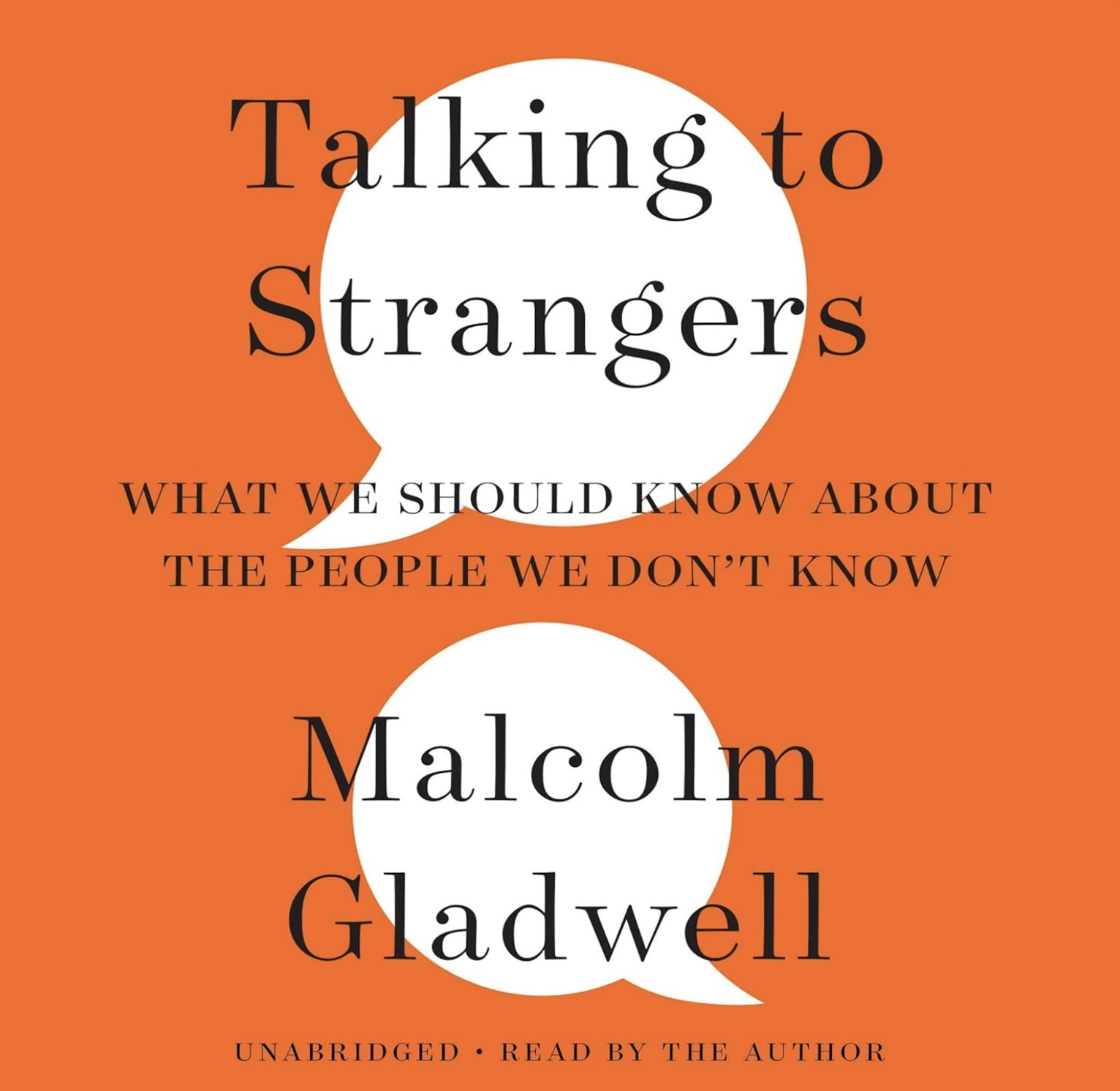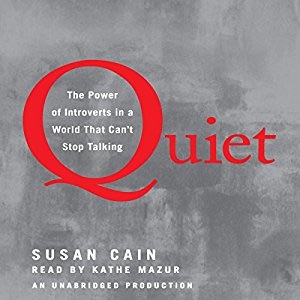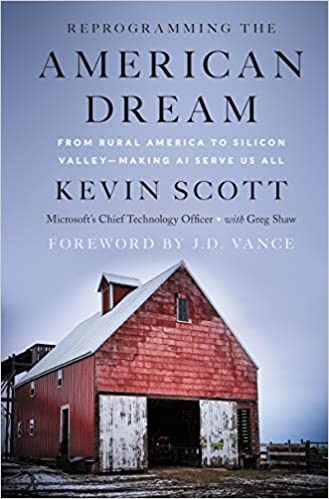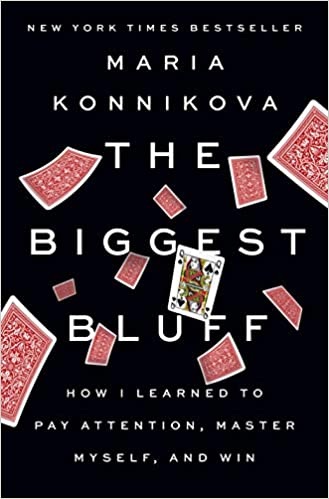Archive for the ‘Business Books’ Category
Thursday, April 19th, 2012
QUIET: The Power of Introverts In a World That Can’t Stop Talking by Susan Cain (© 2012, Crown Publishers: New York, NY) tells the story of how being introverted has its advantages and how the extrovert ideal is overrated. Learn how forced collaboration can stand in the way of innovation, and how the leadership potential of introverts is often overlooked. This book is passionately argued and draws on cutting-edge research in psychology and neuroscience. Leaders, educators, and parents need to pay attention to Cain’s findings. Also check Susan’s TED talk.Click the icon below to purchase this vital book from Amazon.
Susan Cain
- Before she became a writer for outlets like the New York Times, Susan practiced corporate law for seven years, representing clients like JP Morgan and General Electric, and then worked as a negotiations consultant, training all kinds of people, from hedge fund managers to TV producers to college students negotiating their first salaries. Her clients have included Merrill Lynch, Shearman & Sterling, One Hundred Women in Hedge Funds, and many more. She is an honors graduate of Princeton University and Harvard Law School.
- She prefers listening to talking, reading to socializing, cozy chats to group settings, and likes to think before she speaks (softly). She has never given a speech without being terrified first and explores this paradox in this book.
Rosa Parks Was an Introvert.
- If Rosa Parks wasn’t an introvert, she may not have made such a big stride for racial equality. Susan starts with this story that shows how the extrovert Martin Luther King was able to use Parks’ example. Studies tell us that 1/3 to 1/2 of Americans are on the introvert side of this spectrum. There is no such thing as a pure introvert or a pure extrovert. Unfortunately, we live in a value system she calls the Extrovert Ideal. This results in parents apologizing for shy children who feel there is something wrong with them. In addition to Parks, Cain lists many other famous introverts.
Basic Descriptions
- Extroverts tend to tackle assignments quickly. They make fast (sometimes rash) decisions and are comfortable multitasking and risk-taking. They enjoy the thrill of the chase for rewards like money and status.
- Introverts often work more slowly and deliberately. They like to focus on one task at a time and can have mighty powers of concentration. They are relatively immune to the lures of wealth and fame. They prefer environments that are not overstimulating and 70% are also sensitive. They may be shy, which is a painful condition, but introversion is not. Cain provides a 20 item true/false test so you can determine where you are on this scale. I answered 16 items on the introvert side, which helps explain why I love doing DrDougGreen.Com.
Posted in Book Summaries, Business Books, Education Books, Leadership Books | Comments Off on Quiet: The Power of Introverts In a World That Can’t Stop Talking
Tuesday, November 9th, 2010
Reframing Organizations: Artistry, Choice, and Leadership 4th Edition by Lee Bolman and Terrence Deal, is the best textbook for a leadership course that I have seen. I use it for a course I teach for educators at the State University of New York at Cortland. The focus deals with the structural, human relations, political, and symbolic frames found in all organizations. If you analyze complex situations using all four, your are more likely to have success leading and managing. The summary includes activities I do with my class. It should be in every library and professional development collection.
Click here for my summary and activities from Reframing Organizations.
Tags: Leadership Education, Lee Bolman, Reframing Organizations, Terrance Deal
Posted in Book Summaries, Business Books, Education Books, Leadership Books | Comments Off on Reframing Organizations – Lee Bolman & Terrance Deal
Monday, April 27th, 2020
Reprogramming the American Dream: From Rural America to Silicon Valley – Making AI Serve Us All by Kevin Scott finds a balance between “the robots are coming for our jobs” and “AI is great, nothing to worry about.” Like Kevin, I believe that all citizens need to educate themselves regarding the promises and perils of AI. That is clearly the purpose of this book. It won’t make you an expert in AI, but it will give you many clues. In addition to citizens, AI experts, policymakers, and executives are also Kevin’s intended audiences.
Introduction
- There are two prevailing stories about AI. For low and middle-skill workers, we hear a grim tale of steadily increasing job destruction. For knowledge workers, we hear an idyllic tale of enhanced productivity and convenience. But neither captures the whole story. The story we need is AI’s potential to create abundance and opportunity for everyone as it helps solve the world’s most vexing problems. Kevin’s story is based on his upbringing in rural Virginia and his life as executive vice president and chief technology officer for Microsoft.
- We know AI will radically impact economics and employment and we are already seeing it perform very specific, narrow tasks like selecting the ads you see, turning speech to text, and translating languages. He sees a future where workers at all skill levels are served. While AI was invented in the US, China’s goal is to become the leader and thus dictate policy regarding this technology. In order to have a voice in the debate you need to be informed, which is the goal of this book.
PartI: Where We’ve Been – 1. When Our Jobs First Went Away
- Kevin returns to his rural home and visits old friends who are using simple versions of AI to harvest sod, monitor nursing home patients, and manufacture specialized plastic parts. The latter demonstrates how technology is allowing some manufacturing jobs to return to the US. In the case of the sod farmer, drones using AI are saving human jobs. In essence, AI can empower people rather than replacing them. He also visits a large Microsoft data center that replaced an obsolete prison. The local college even started a program to train workers. The challenge is to convince high school graduates that there is a better future in a technology job than in oil and gas jobs which might pay $60,000 to start, but are heavy labor jobs that over time, pay little more than the initial offer.
2. The Career Choice I Made
- This chapter is largely autobiographical. Kevin tells his story from home to college to a small engineering company in Lynchburg, VA, to graduate school at the Univerity of Virginia where he met his future wife. When she was accepted to a PhD program in Götingen, Germany he was able to get a job there too. From there he went from Google to AdMob, to Google, to LinkedIn. LinkedIn was acquired by Google in 2016 and ultimately he was chosen by Saya Nadella the CEO to be Microsoft’s chief technology officer (CTO).
- Along the way Keven stresses the importance of his supportive family and community in rural Virginia. While they were not rich he never lacked for food or housing and hand mentors and role models that supplemented his education. He didn’t have health care until he got to Google but never got sick either. While he doesn’t think you should base all of your career decisions on income, you should consider the economics of the choices you make. Get as much data and good advice as you can and reflect prior to making important life choices. For companies, he stresses the importance of stories. They need to be stories that employees can make their own and they need to be connected to how their work can somehow make the world a better place.
3. Stories of Revival
- The stories here focus on rural life and opportunities. In 2016 75% of venture funding went to Silicon Valley, New York, and Boston. Kevin tells the success story of Memphis that now has the world’s largest cargo airport. AI is making inroads in agriculture with robots that do precision irrigation and drones that apply fertilizer and pesticides in just the right quantities and locations. Kevin offers some ideas of how the government can incentivize rural entrepreneurship. His big idea is to have an Apollo type program for AI. The Apollo program only cost $200 billion in the 1960s to get to the moon so it should be possible to do the same for AI.
- We need a system to make rural people better at tech so they can run and debug drones, robots, and other high tech farm equipment. There is some effort in this direction. We also need to break down the stereotypes that urban and rural people have of each other. The media that people currently consume is part of the problem as many people binge on unhealthy information. He switched his consumption to 75% refereed journals like Science and Nature, 25$ to learning something new and different not related to his job, and 5% for everything else. Doing so made him less anxious, irritated, and much better informed.
Posted in Book Summaries, Business Books, Leadership Books | Comments Off on Reprogramming the American Dream: From Rural America to Silicon Valley – Making AI Serve Us All by Kevin Scott
Friday, August 20th, 2010
Monica O’Brien’s book gives the big picture along with abundant detail on how to manage the social media feed for an organization or an individual. While it is written with businesses in mind, it certainly applies to educators and schools as well. My summary focusses on the concepts. If you want the detail, buy the book. Someone in your organization should have it.
Click here to see my summary Social Pollination.
Tags: Monica O'Brien, Social Media, Social Pollination
Posted in Book Summaries, Business Books, Leadership Books | Comments Off on Social Pollination – Manage your social media effort – Monica O’Brien
Monday, November 9th, 2015
Staying Sharp: 9 Keys for a Youthful Brain Through Modern Science and Ageless Wisdom by Henry Emmons and David Alter offers advice that all of us can use to live a longer, healthier, and more fulfilling lives. Use this summary to see how you are doing and where you might need to improve. Then click at the bottom to purchase the book for the necessary details.
Henry Emmons and David Alter
- Henry is a psychiatrist who integrates mind-body and natural therapies, including mindfulness and compassion practices into his clinical work for Partners in Resilience in Minneapolis. He is also the author of The Chemistry of Joy and The Chemistry of Calm, and a popular workshop and retreat leader for both healthcare professionals and the general public.
- David is a psychologist with thirty years’ experience in health, psychology, neuropsychology, and clinical hypnosis, which he integrates in his work. He is a sought-after speaker, teacher, and trainer offering talks, workshops, and retreats to general and professional audiences. He is a cofounder of Partners in Healing, a center for holistic health in Minneapolis, and conducts his practice there.
Introduction
- Before the authors get to their Nine Keys to a Youthful Brain, they offer three chapters that discuss how the brain works and what happens as it naturally ages. Even though it does slow down, new neurons do form and new connections can be made. We also have less ability to pay attention, find learning more challenging, and take longer to retrieve information.
- They also focus on the concept of mindfulness, which deals with what you consciously do with your brain as you navigate your environment. This is called purposeful attention. There is nothing to stop you from being emotionally aware and cultivating a more joyful life. In addition to mind, we are also body and spirit.
The Nine Keys to a Youthful Brain
- 1. A Youthful Brain Loves Movement. Lack of movement is a strong reason behind many modern chronic health problems. Movement exercises the body and the brain. Exercise also helps reduce stress. There is lots of specific advice here and it’s never too late to start.
- 2. A Youthful Brain Is Well Rested. It is well established that sleep and other forms of rest are good for brain health. It also promotes good mood, memory, and healing. Short naps during the day also seem to be beneficial as long as you are sleeping well at night. If you are having trouble sleeping you might find the cause here along with tips for improving your sleep experience.
- 3. A Youthful Brain Is Well Nourished. This should be obvious. We generally eat too much, not enough fiber, and too much sugar. The authors suggest you try to eat unprocessed foods, emphasize plants and healthy fats, shift some protein away from meats, reduce sugars, drink more water, get more fiber and probiotics, and drink alcohol in moderation. There are good specifics on each of these issues along with tips to eat more mindfully.
- 4. A Youthful Brain Cultivates Curiosity. Curiosity activates the reward centers deep within the brain. It is a whole brain exercise that integrates the knowledge circuits of the left brain with the pattern-seeking circuits of the right brain. It will keep you fresh and lead to a longer, healthier, and more fulfilling life. If you cultivate your own curiosity, the world will be a more beautiful place and boredom will fade. If you seek out novelty you will become a constant learner. Get the book to learn how.
- 5. A Youthful Brain Stays Flexible. This runs counter to nature’s design, but has more to do with fear than destiny. If you respond more flexibly to change, life can become more enjoyable, rewarding, and fulfilling. One way to do this is to spend more time thinking about thinking (metacognition). The other keys contribute to your flexibility as will advice in this chapter.
- 6. A Youthful Brain Is Optimistic. Our brains are hardwired to be optimistic and you can increase your optimism with practice. It evolved to keep us engaged when logic suggests we give up. It’s benefits can be measured in terms of physical and mental health criteria. It will certainly make you more resilient as you age.
- 7. A Youthful Brain Is Empathic. Empathy arises from brain regions that regulate the quality of our relationships. You should practice empathy to help regulate your mind and behavior. This is how you influence the brains you interact with. Practicing empathy can make you more calm, content, and satisfied. Parents need to promote this quality in their children. One focus here is active listening, which is an important leadership skill.
- 8. A Youthful Brain Is Well Connected. The brain needs connection to others. Forming strong bonds early has a lasting impact. We need to learn how to create, grow, and maintain healthy social connections. This is very important as we age. Physical and mental health are necessary for positive social connections. If you do this right you will feel loved, respected, and listened to. This relates to Howard Gardner’s inter-personal intelligence. Even if you aren’t a natural connector, you can become one.
- 9. A Youthful Brain Is Authentic. No one wants to live someone else’s life. This key requires that you listen to yourself and live a life true to who you are. If you pull this one off, you should feel more confident and self-assured. This relates to Howard Gardner’s intra-personal intelligence and it can be increase with intent. Meditation can help.
Conclusion
- Even though I strongly suggest you purchase and read this entire book, this summary can act as a self-test that can help you see where you stand. While I’ve read most of this advice elsewhere, this book does a great job of pulling it all together. I was happy to see that I have already been following these keys. In my case, this book served to reinforce my approach to life, which has served me well. I’ve never missed a day of work due to illness, and don’t find life stressful. I enjoy the world and the people I meet, and people often tell me that I don’t look like I was born in 1947. I hope you are in the same boat, but if not, see what you can do to take the advice given here. You will also find tips here you can share with others at work or in your personal life. Good luck.
Posted in Book Summaries, Business Books, Education Books, Leadership Books | Comments Off on Staying Sharp: 9 Keys for a Youthful Brain Through Modern Science and Ageless Wisdom by Henry Emmons and David Alter
Friday, January 25th, 2013
Switch: How to Change Things When Change is Hard by Chip and Dan Heath deals this one of the most important topics faced by any leader and everyone else. They believe that the primary obstacle comes from conflict built into our brains. They explore this conflict between our rational brain and our emotional brain that compete for control. This book will help your two minds work together. It draws on decades of research from multiple fields to shed new light on how you can effect transformative change. Discover the pattern they have found and use it to your advantage. Click below to purchase this important book.
The Heath Brothers
- Chip Heath is a professor at the Graduate School of Business at Stanford University. Dan Heath is a senior fellow at Duke University’s Center for the Advancement of Social Entrepreneurship (CASE). They are the authors of the bestseller Made to Stick and a new book Decisive: How to Make Better Choices in Life and Work also summarized here.
I just added a summery of thier 2018 book The Power of Moments.
Introduction
- All change efforts have something in common: For anything to change, someone has to start acting differently. All change effort boils down to the same mission: Can you get people to start behaving a new way? First surprise: What looks like a people problem is often a situation problem. To change someone’s behavior, you’ve got to change that person’s situation.
One Brain – Two Minds
- Human brains have their emotional side and their rational side. You can think of the two sides as the planner (rational) and the doer (emotional). In this book, the Heaths use an analogy they borrowed from Jonathan Haidt in his book The Happiness Hypothesis. Here, the emotional side is the Elephant and the rational side is the Rider. When the two sides disagree, the six-ton Elephant is going to win. If you want to change things you need to appeal to both the Rider and the Elephant. The Rider does the planning and the Elephant provides the energy. The Rider provides the direction, the Elephant provides the passion.
Posted in Book Summaries, Business Books, Education Books, Leadership Books | Comments Off on Switch: How to Change Things When Change is Hard by Chip and Dan Heath
Monday, October 7th, 2024

Talking to Strangers: What We Should Know About the People We Don’t Know by Malcolm Gladwell features a number of notable stories where people were unable to correctly determine the intention of strangers. We default to truth when talking to strangers, which makes us prone to misjudgment. The opposite approach of always being skeptical of strangers, however, seems to be less productive.
Part One: Spies and Diplomats: Two Puzzles – 1. Fidel Castro’s Revenge
- Many of the spies the US had in Cuba were double agents. For some reason our people couldn’t tell that they were.
2. Getting to Know Der Führer
- Here is the story of British Prime Minister Neville Chamberlin. Although he had met Hitler, he was duped while those who had not met him like Chamberlin’s predecessor Winston Churchill were not. This puzzling pattern pops up everywhere.
- Judges are more likely to misjudge the people they see than a computer program that only knows their dossier. The main point of this book is that strangers are not easy to judge correctly.
Part Two: Default to Truth – 3. The Queen of Cuba
- Here is another spy who fooled just about everybody. It’s not that the spies are brilliant, it’s something wrong with the people who misjudge them. Evolution should have favored people who can spot a lier, but it hasn’t.
- One theory is the Truth-Default Theory. We operate on the assumption that the people we are dealing with are honest. Our lie detector is set to “off.” It also takes a lot of evidence over time for our suspicions to outweigh our default. A story here about a top Cuban female spy supports this.
4. The Holy Fool
- Bernie Madoff is known as the perpetrator of the largest Ponzi Scheme in history. Malcolm gives the names of a number of people in the securities business who thought that something had to be amiss with Madoff’s business, but they assumed that they were wrong and gave him the benefit of the doubt. The Holy Fool comes from Russian folklore. This is the one person who sees through a scheme and is in a position where he is free to tell everyone what he sees. An example is the boy in Hans Christian Anderson’s The King’s New Clothes. Gladwell tells of one such Holy Fool associated with the Madoff scandal.
Posted in Book Summaries, Business Books, Education Books, Leadership Books | Comments Off on Talking to Strangers: What We Should Know About the People We Don’t Know by Malcolm Gladwell
Saturday, June 29th, 2013
Thank You for Listening: Gain Influence & Improve Relationships, Better Listening in Eight Steps by Marc Wong (©2012) will help you learn how to put someone else’s speaking, thinking, and feeling needs ahead of your own. By so doing, you will build trust, earn respect, and gain influence. Marc’s eight steps are practical, and the book is an enjoyable read. Click the icon at the bottom of any page to purchase this fine book.
Tags: Listening, Marc Wong
Posted in Book Summaries, Business Books, Education Books, Leadership Books | Comments Off on Thank You for Listening by Marc Wong
Saturday, October 10th, 2020
The Biggest Bluff: How I Learned to Pay Attention, Master Myself, and Win by Maria Konnikova chronicles her journey as a PhD psychologist and journalist into the world of professional poker. She starts with zero knowledge and experience and with the help of mentors and lots of hard work becomes a poker champion. While the framework for this book is the game of poker, each chapter features generalizations that we can all draw on to add quality to our lives.
A Prelude – Las Vegas, July 2017
- We start with a story from the World Series of Poker, which is The World Cup, The Masters, and The Super Bowl for poker players. Anyone can enter as long as they put up the $10,000 entry fee. This can be a lifetime dream for many. As play continues Maria’s seat sits empty while the dealer takes the anti for each hand from her piles of chips and tosses her cards into the discard pike known as “the muck.” She is in the bathroom curled up in a fetal position on the floor after barfing her brains out due to eating some bad guacamole. At the time she understood the line between skill and luck. The message is that you can’t calculate for dumb bad luck and you can’t bluff chance.
Ante UP – New York, Late Summer 2016
- Here we meet Erik Sidel, one of the top poker players of all time. Maria approaches him to see if he will mentor her for her experiment, which involves seeing if a psychologist with zero knowledge of poker can have success after spending only a year learning the game. Eric knows that most people who get serious about the game come at it thinking a deep knowledge of math is the most important attribute. He knows that a deep understanding of psychology is more important as the necessary math his not that hard to master. He also sees Maria’s language skills as another key attribute. (She is fluent in English and Russian, was fluent in Spanish and French, and can get by in Italian.) Eric accepts the challenge and it’s game on. You don’t play poker, you play the world.
The Birth of a Gambler – Boston, Fall 2016
- Life is a gamble. It may not seem like playing poker, but in some sense, much of life features less control than you have as a skilled poker player. Here we have a conversation with Maria’s grandmother (Baba Anna) who is very disappointed that Maria is taking up poker rather than a “real job.” Skilled stock pickers do no better than chance in the long run while professional poker players routinely outplay amateurs. In poker, the best hand doesn’t always win. This sets it apart from other games. The process of betting gets your full attention unlike making a decision where no bet is involved. This allows you to benefit from life’s decisions as well. Accurate probabilistic thinking is rare, but it is necessary for success in poker. Like people who predict the weather and horse races, poker players get immediate feedback and have no one to blame but themselves.
The Art of Losing – New York, Fall 2016
- Eric’s step one is to read the poker books by Dan Harrington, cousin to the golfer Padraig Harrington. Next, you need to watch streams with real hands being played by the best players. Sign up for the Run It Once a poker coaching site. Then start playing for real online for tiny stakes that can gradually get bigger. From there you can proceed to small tournaments and then move up to bigger ones. You need a balance between aggressive and conservative playing so that your opponents can’t figure you out. You also need to keep track of everyone’s stack size.
- Here we encounter the importance of learning from losing. (Doug: The concept of learning from failure is found in many of the other books I have summarized.) You have to constantly think, analyze, and stay objective. This is hard to do. This means that you never take things personally as you treat triumph and disaster the same. Disaster can bring true objectivity. Eric teaches Maria that there is no certainty, only thought. There are no right answers regarding any situation without a greater context. Self-awareness and self-discipline should be your twin goals.
The Mind of a Strategist – New York, Late Fall 2016
- Maria starts practicing online, but in order to do so, she has to take a train from Manhattan to New Jersey as online poker is illegal in New York State. She picks a puppy as her avatar and “psychchic” as her screen name. She describes a hand she loses and finds that she made a mistake by trying to copy a hand Eric had once and acted aggressively so as not to look weak. Time is an issue online and in real tournaments as it is in real life. In both cases, you want to use the time you have to think things through, but not act impulsively as time starts to run out. When playing you want to be the last one to act as that will give you maximum information.
- The military analogy applies here. You need to know the enemy and survey the nature of the board in each hand. Like a general, you need to decide just how many of your troops you need to deploy. Everything from a scout to every soldier you have is in play. Your strategy cannot be predetermined. Another analogy is that of a jazz band where once it’s your turn you have to decide what to play.
- If you only bet when you have top cards your opponents will figure that out and you won’t win much. You will lose more as you won’t often have top cards. This is why you have to bluff on occasion. Maria tells the story of getting an offer to write an article about what she was doing. She said no several times until she got an offer of $3/word. Like sometimes in poker, she got more out of her hand then she thought she could.
Tags: Eric Sidel, Maria Konnikova, Phil Galford, Poker, Texas hold 'em
Posted in Book Summaries, Business Books, Leadership Books | Comments Off on The Biggest Bluff: How I Learned to Pay Attention, Master Myself, and Win by Maria Konnikova
Friday, August 31st, 2012
The Click Moment: Seizing Opportunity in an Unpredictable World by Frans Johnasson ( © 2012, Portfolio/Penguin: New York, NY) will help you to be more prepared when click moments show up. These are somewhat random events that prepared minds can take advantage of to promote success. The great stories he uses as examples serve to make this a most engaging and valuable book. Please consider clicking on the Amazon icon at the bottom of each page as you read my summary.
Posted in Book Summaries, Business Books, Leadership Books | Comments Off on The Click Moment by Frans Johansson











